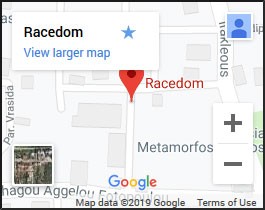APR Brake Pad Set, Track/Street, 6 Piston Caliber, 350/380mm Disc
This compound will offer similar characteristics to our High-performance Street compound in terms of having a slightly rising torque curve during a single application. It will offer a little less initial bite as you engage the brake pedal under normal street driving conditions. This material also takes a little longer to bed in and prefers to be run at slightly higher operating temperatures in order to maintain the friction film that is put down on the disc surface during the bed-in procedure. This material can be run to higher max operating temperatures than our standard High-Performance Street compound while remaining fade-free. The additional heat range means that this compound can be used for entry-level track days. This makes this material a good choice for customers that would like to take part in occasional track days but do not want to change pads prior to these events.
Features
- Optimal temperature range: 0-630 deg C (0-1166 deg F)
- Best choice for customers that want to use one pad for high-performance street and entry-level track day use
- Acceptable for entry-level track day use but pad wear will be high if used for advanced track applications

Frequently Asked Questions
Q: 2-piece vs monoblock calipers?
A: People often point to Formula-1 calipers which are monoblock construction and claim that if Formula-1 cars use monoblock calipers then these must be best. The truth is that F1 monoblock calipers are manufactured from exotic materials that are simply not feasible for use in aftermarket big brake kits due to prohibitive cost. The 2000, 6000 and 7000 series aluminum alloys that are used in the construction for all calipers found in aftermarket big brake kits are nowhere near as rigid as the F1 materials. The fact is that if you compare a monoblock caliper (manufactured from 2000, 6000 or 7000 series aluminum) to the exact same caliper design but with a 2-piece construction and high tensile steel bolts holding the two caliper halves together, the 2-piece caliper will be more rigid because the steel bolts add significantly to rigidity. The only down side to a 2-piece caliper construction is the weight of the bolts and frankly no high-performance street or track day enthusiast will be able to feel the weight of the bolts under real-world driving conditions.
Q: Some OE multi-piston brake calipers have 8-pistons (on Audi RS models for example). Are these calipers ‘better’ than the 6-piston calipers in the APR BBK’s?
A: The number of pistons in a multi-piston brake caliper do not make it a ‘better’ or ‘worse’. Overall caliper design elements, structural rigidity, bolt positioning and the material that the caliper is manufactured from determine its performance and feel. Generally speaking multi-piston calipers are designed around fairly large pad profiles because the larger and friction material volume directly translate into increased pad life. As pads get longer, it becomes important to evenly distribute the the force from the caliper pistons evenly along the length of the pad backing plate, which is why multiple smaller pistons are used instead of just one large piston as is common in many OE calipers. While there are some well-designed 4 & 8-piston calipers on the market the ideal balance balance between pad size and caliper size, weight and rigidity is often a 6-piston caliper layout. Most top-level race calipers today from circuit (Touring Car, Endurance, F1) to off road rally-raid (Dakar Rally, Baja etc) are a 6-piston configuration due to this inherent balance.
Q: Why are the pistons in your calipers different sizes?
A: One negative consequence of using larger / longer pad profiles (as is typically the case in multi-piston calipers) is that the pads can wear at a tapered angle over the life of the pad. The pad will typically wear more at the leading edge (where the disc enters the caliper) and less at the trailing edge (where the disc exits the caliper). To counteract this differential piston ratios are employed in conjunction with careful piston positioning. The pistons will increase in size from the leading to trailing edge of the pad. The larger piston(s) closer to the trailing edge exert more force on the pad backing plate than the smaller piston(s) at the leading edge, hereby offsetting the tapered pad wear issue. While it is impossible to completely eliminate tapered pad wear due to the massive variety of different pad compounds on the world market and how they all interact differently with the disc, the engineers at brake companies put a lot of effort into calculating the best middle ground in order to minimize the occurrence of tapered pad wear.
Q: Why do your calipers not have removable caliper bridges to allow for easier pad changes?
A: The APR 6-piston caliper employs a solid bridge that houses a high-tensile steel bolt. This design philosophy has significant benefits in terms of caliper rigidity, performance ultimately brake feel for the driver. This is why most high-level 6-piston motorsport calipers employ integral solid bridge designs. Let’s consider the pros and cons of this design: It is true that in some cases calipers with removable bridges can make pad changes slightly easier. The negative that is commonly found with removable caliper bridges (we see this regularly in the market and there are a number of YouTube videos out there taken by unhappy customers to prove this point) is that as a result of machining tolerances as well as anodising / coating tolerances, the bridges are often either a very tight fit (some big brake kit manufacturers recommend using mallets to knock the bridges into place after fitting pads) or the bridges are too loose in which case they have zero effect in terms of adding to caliper rigidity (which is what the bridges are there for in the first place). While having this discussion, it is also worth considering that one of the key benefits of a big brake kit is significantly increased pad life (as the result of both far larger pads and reduced operating temperatures). The result is that under street driving conditions pad change intervals are going to be significantly extended. Is it worth sacrificing the design benefits of an integral bridge for the possibility of saving a few minutes during a pad change that is like to only occur every 1-2 years? We don’t believe so.
The sequence that we recommend for APR customer performing a pad change is a follows:
- First remove the R-Clips and pad retaining pins while the APR caliper is still bolted to the caliper bracket.
- Once the pad retaining pins are removed, then remove the two M12 caliper mounting bolts and use a cable-tie / zip-tie (readily at hand in most workshops and households) to tie the caliper through its bridge to a coil spring on the car.
- Slide the used pads out through the bottom of the caliper and slide the new pads into the caliper.
- Clip off the zip-tie.
- Slide the caliper with the newly fitted pads back over the disc.
- Insert and correctly torque the M12 caliper mounting bolts.
- Insert the pad retaining pins and ensure that the R-clips that retain the pins in the calipers are in place (SAFETY CRITICAL).
Q: Why are your calipers anodized and not painted?
A: Many big brake kits aimed at the street tuning and entry-level track day markets feature powder coat or epoxy paint finishes. These finishes look attractive when new but don't handle the caliper temperatures reached under track day conditions well at all, often discolouring to a brown or black burnt color. The powder coat and epoxy paint finishes also do not handle exposure to brake fluid or brake cleaners / solvents, which will often damage painted caliper finishes. The calipers in the APR brake kits feature an anodized surface finish. Note that there are vastly different levels of anodising dyes on the world market, we exclusively use anodizing dyes that deliver maximum UV resistance and color fastness. The up side of choosing to anodize the APR calipers is that the color retention at the high temperatures experienced under fast road and track day conditions is superior to painted finishes. In addition to this the anodized finish will not be damaged by accidental exposure to brake fluid or most brake cleaners / solvents.
Q: Caliper max temp recording stickers – Why are on they back (inboard face) of the caliper?
A: The max temperature recording stickers on the inboard face of the APR caliper bodies provide a permanent record of the maximum temperature reached by the caliper body during use. This can be helpful when selecting a brake fluid with the correct temperature range for your application or to diagnose issues with caliper seal life (in extreme applications). The white strip in the centre of the blue sticker will turn black to indicate the max temp reached. The stickers are applied to the inboard face of the calipers as most APR customers would prefer to keep the outboard face of the caliper (that is visible through the wheel) looking clean. Street customers can check the caliper temp stickers during pad changes for interest sake. Track day users will be changing wheels, tyres and brake pads more regularly and can easily view the stickers at these times.
Q: Are the discs in your big brake kits floating?
A: Yes the disc assemblies in the APR kits are floating. To be more specific the disc friction rings are able to expand and contract radially during heating and cooling cycles without putting any stress on the aluminium hats/bells. The APR disc assemblies do not allow for axial float (i.e. inboard / outboard float). The floating system used in the APR disc assemblies is simple, maintenance free, runs quiet and is proven to be very effective for high-performance street and track day applications.
Q: What is the black coating on your discs, why do you apply it and will it come off in use?
A: The number one reason for the black coating on our discs it to ensure that there is no oil on the discs at the time of fitment. Most discs are coated with oil by the manufacturer before packaging in order to prevent the formation of rust on the disc surface during storage and transport. The danger is that if this oil is not completely removed before installation, the pads will absorb some of the oil during first use (pad friction materials are porous). The pad friction material will absorb any oil / lubricants on the disc surface. This can severely reduce brake performance. Many brake system manufacturers simply state in their fitment instructions that the disc friction surfaces must be cleaned with brake cleaner or similar prior to installation. The reality is that this is not always done by the installer. All APR discs are chemically de-greased by the factory before the black coating is applied. The black coating will not contaminate or negatively affect the brake pads at all, meaning that the installer does not need to clean the discs at all during fitment and the car owner is assured that his brake pads will not be contaminated by oils / lubricants. The pads will cut through the back coating in the pad track area within about 5-10 brake applications, exposing the disc surface below. It can sound slightly rough when performing these first few brake applications. Experience has shown that the black coating does offer additional corrosion resistance for the non-swept areas of the discs but the coating was not designed to be a corrosion inhibitor and APR makes no claims that surface rust will not appear on the cast-iron disc rings (which is normal).
Q: What are the coloured paint tabs on the outer diameter of the discs?
A: The coloured paint tabs on the outside diameter of the discs are a maximum temperature recording system. Each of the shorter paint tabs will change to a white / cream colour at a specific temperature, hereby giving the car owner a permanent record of max temp that the discs have reached since new. This is far more valuable information than any reading that is taken with a pyrometer when the car returns to the pits for example after a track day session. Measuring brake disc temps in the pits is practically meaningless. The key information required when analysing brake disc life, pad wear life and when selecting the correct pad compound for a particular application is the maximum temperature that the disc has reached during use. The shorter paint tabs provide this information. See below for descriptions of colour changes and what they mean it terms of peak operating temps reached by the discs Customers will find a description of what each colour means in terms of max temps reached in their fitment instructions that accompanied their kit. The longer ‘Red’ paint tab is intended for more detailed analysis by APR and is not intended for use by the car owner as it requires additional expertise to interpret.
- Blue paint - turns Light Brown at: 275 deg C / 527 deg F
- Green paint - turns White at: 460 deg C / 860 deg F
- Orange Paint - turns Yellow at: 550 deg C / 1022 deg F
- Pink paint - turns White at: 630 deg C / 1166 deg F
Q: How much does disc diameter influence brake performance (stopping power)?
A: Disc diameter does have an influence on ultimate brake torque (stopping power) but not as much as most people think. For example: If all other variables (such as brake pedal input, brake pad compound and hydraulic ratio between master cylinder and caliper pistons) remain equal then a change in front disc diameter from 312mm to 350mm on a VW Golf 7 GTi would increase the actual brake torque output at the front wheels by just 2%. Far more significant increases in brake torque can be achieved by changing caliper piston ratios and/or pad compounds. The real benefit of the larger diameter discs in big brake kits is that will run cooler than the smaller OEM equivalents. This results in more consistent brake performance especially in driving conditions where numerous consecutive hard brake applications are encountered.
Q: Explain your disc material, construction and cooling vane design?
A: The disc friction rings in the APR big brake kits are cast from a proprietary high-carbon cast iron alloy that provides exceptional durability even at very high operating temperatures. The disc design features a good balance between plate wall thickness, cooling vane surface area and air gap size. Our 350mm disc feature 55 x cooling vanes and our 380mm discs feature 72 x cooling vanes. Both disc designs have proven itself to over exceptional performance and wear life over a wide range of operating conditions ranging from fast-road to serious track use. IMPORTANT: The discs are directional and must be fitted to the correct side of the vehicle in order to ensure correct airflow through the cooling vanes. Each disc has an arrow machined into the disc surface that clearly shows correct rotational direction.
Q: Cross-drilled vs slotted discs?
A: The bottom line is that while a lot of customers may like the look of cross-drilled discs, they are prone to cracking around the drill sites. Slotted discs can provide all of the benefits of cross-drilled discs while being far more durable. Even within large car manufacturers the cross-drilled vs slotted disc debate is a very active. The marketing guys say that customers like the look of cross-drilled discs because it became a sort of ‘super-car signature look’ from the 80’s onwards, while the engineering guys want slotted discs because they are more durable. Bottom line is that if you look at any factory built full race cars (such as CUP cars) they are all fitted with slotted discs and not cross-drilled for good technical reasons.
Q: Explain the slot pattern on your discs?
A: The slot pattern used on the discs in APR’s brake kits is designed to offer a good balance between initial brake ‘bite’ and good brake modulation when used with high-performance street tires. Another key benefit of the slot pattern is that it distributes temperature as evenly as possible across the disc surface, which has a number of technical benefits.
Q: What are the benefits of stainless steel braided Teflon brake lines?
A: There are two key benefits of braided brake lines. The first is that they deliver significantly reduced volumetric expansion under pressure that OEM rubber brake lines. This translates into a firmer brake pedal feel and better ‘feedback’ from the brakes through the brake pedal. The reduced expansion also results in slightly quicker system reaction time. The second benefit is that the Teflon inners can handle far higher brake temperatures than rubber brakes lines (which can in fact melt out of the fitting / collar at extreme temperatures such as those sometimes encountered on track days.)
Q: Can you find replacement brake pads easily in the aftermarket?
A: The pad profile used in the APR 6-piston caliper is available from a wide variety of high-performance and race pad manufacturers globally, so apart from the APR specified replacement pads, there are a wide variety of other choices.
Q: Are your brake kits balanced?
A: Yes, APR big brake kits are developed using proprietary brake simulation software that factors in a wide range of vehicle specific parameters and dynamics in order to select caliper piston ratios and pad compounds that optimally match the actuation (master cylinder / booster), rear brakes and vehicle stability control systems of the target vehicle.
Q: Do I need to warm up brakes before they are effective?
A: No, the brake pad compounds selected for use with APR big brake kits will offer efficient braking from cold. No warm up is required.
Q: Will the brakes squeal?
A: While there is always a chance of some brake squeal when using high-friction brake pads in very rigid brake calipers, the APR calipers feature a number of features that help to reduce brake harmonics and brake squeal. You should experience very little or no brake squeal with our big brake kits.
Q: How long will the discs and pads last?
A: It is impossible to give a definitive answer to this questions as there are simply too many variables that affect disc and pad wear life. These include driving style, frequency of brake applications, vehicle loading, brake operating temperatures etc. You should definitely experience increased disc and pad wear life over the factory / OEM brake components though.























